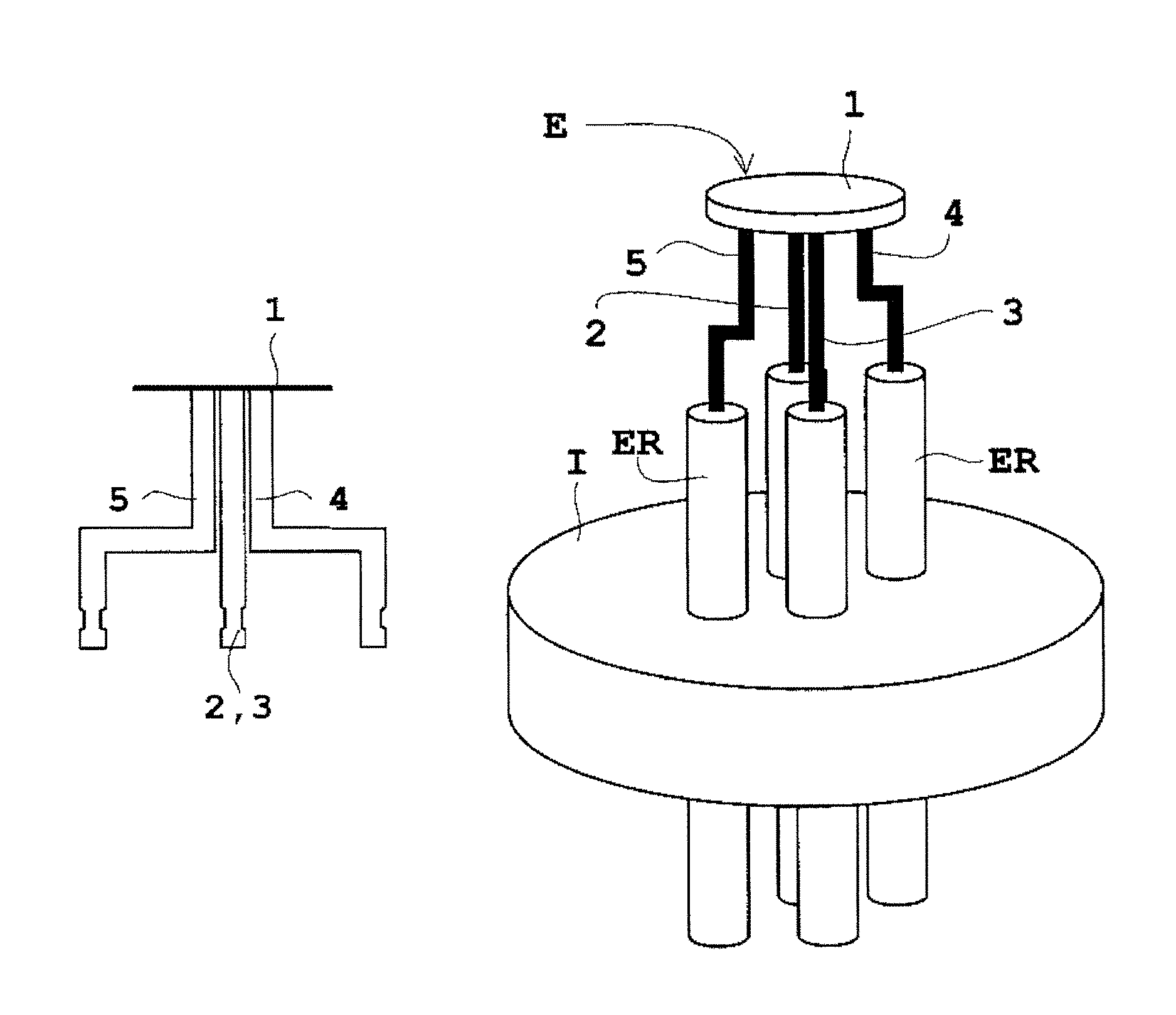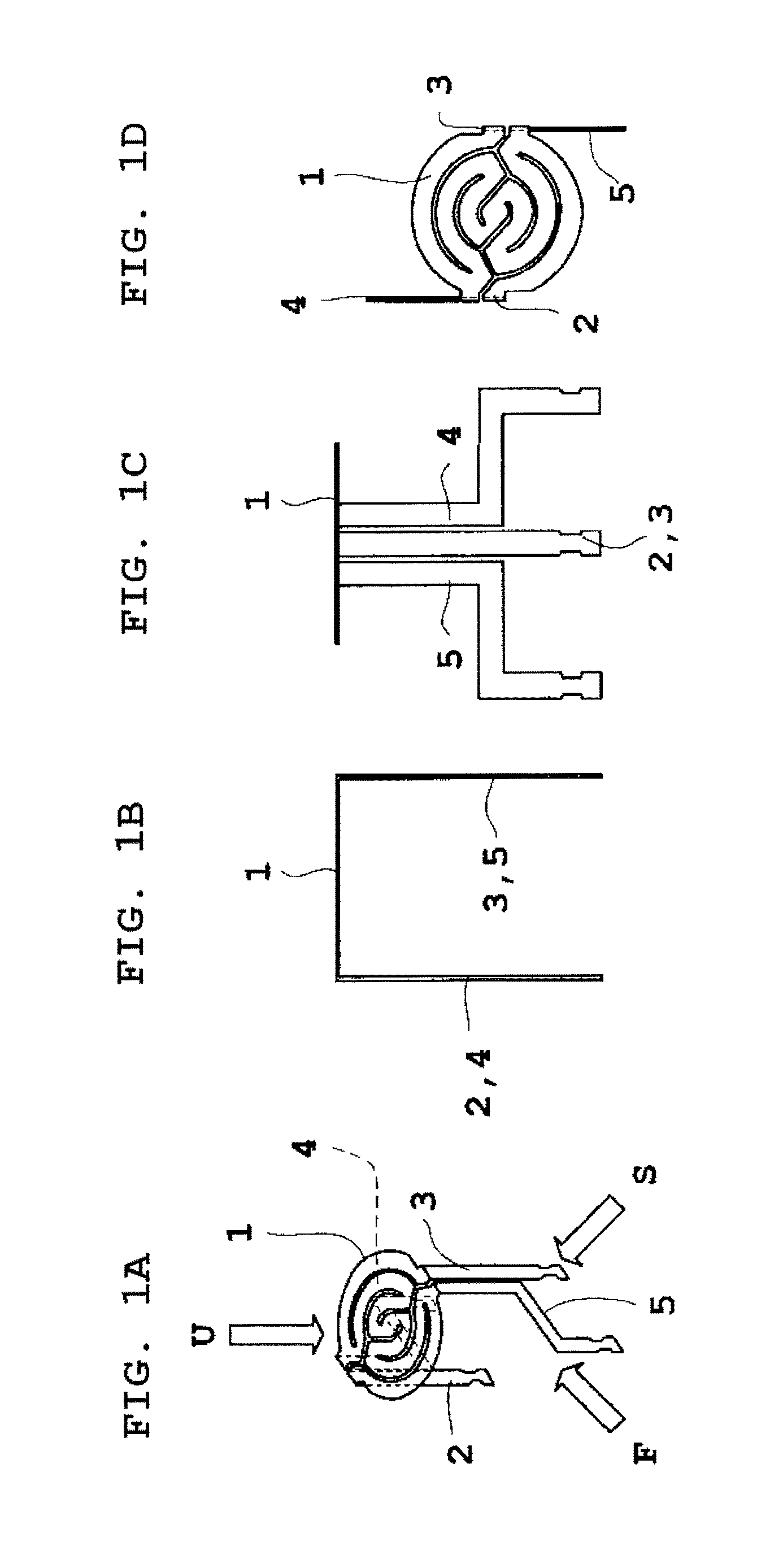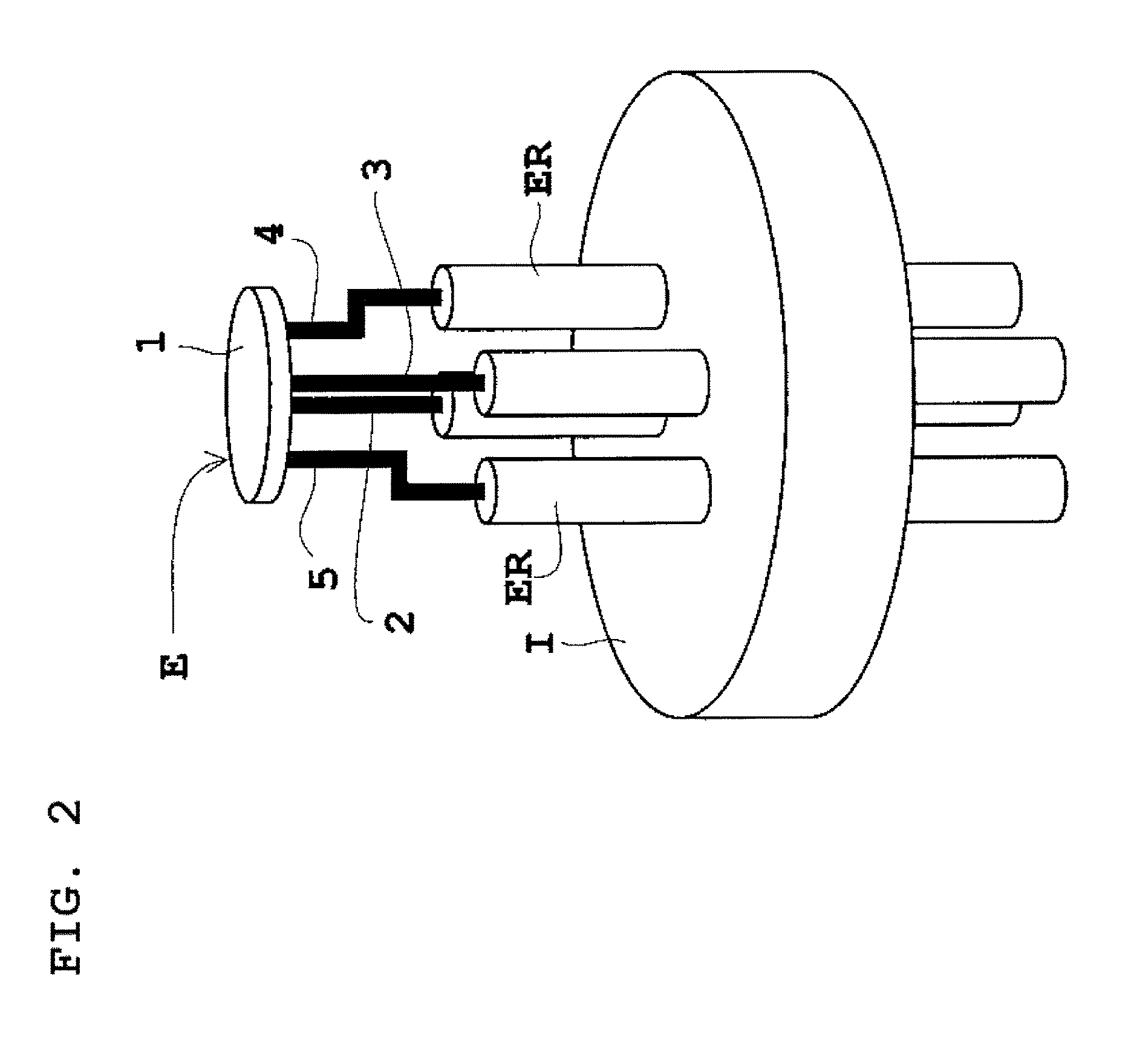Flat emitter
a flat-emitter and emitter technology, applied in the manufacture of electric discharge tubes/lamps, discharge tube main electrodes, electric discharge systems, etc., can solve the problems of increasing the structure of x-ray tubes, complex work for disposing of emitters, and increasing the strength of x-ray tubes, so as to achieve easy maintenance, increase strength, and high precision
- Summary
- Abstract
- Description
- Claims
- Application Information
AI Technical Summary
Benefits of technology
Problems solved by technology
Method used
Image
Examples
Embodiment Construction
[0049]Hereinafter, preferred embodiments of the present invention will be described with reference to the drawings.
[0050]FIG. 1 is a schematic diagram illustrating a flat double emitter (double emitter type 3) according to an embodiment in which half-lighting current-supply heating legs are bent twice in zigzag, FIG. 2 is a schematic view illustrating that the flat double emitter (double emitter type 3) in FIG. 1 is assembled to a base for an X-ray tube, and FIG. 3 is a diagram schematically illustrating the arrangement relation among an electron emission surface, current-supply heating legs, folding lines, each plane, and a center axis. The present embodiment describes a flat emitter (flat double emitter) configured such that two full-lighting current-supply heating legs are linearly formed and two half-lighting current-supply heating legs are bent twice in zigzag, for example. The flat double emitter configured such that two full-lighting current-supply heating legs are linearly f...
PUM
 Login to View More
Login to View More Abstract
Description
Claims
Application Information
 Login to View More
Login to View More - R&D
- Intellectual Property
- Life Sciences
- Materials
- Tech Scout
- Unparalleled Data Quality
- Higher Quality Content
- 60% Fewer Hallucinations
Browse by: Latest US Patents, China's latest patents, Technical Efficacy Thesaurus, Application Domain, Technology Topic, Popular Technical Reports.
© 2025 PatSnap. All rights reserved.Legal|Privacy policy|Modern Slavery Act Transparency Statement|Sitemap|About US| Contact US: help@patsnap.com



